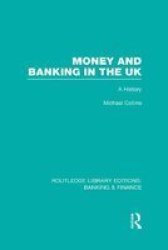Description
This book is about the history of money and banking in the United Kingdom. It covers the years 1826-1986, and during this time the UK became a leading economic power. The book divides this time period into three parts: Part 1 covers the years 1826-1913, during which the UK established a strong domestic commercial banking system. Part 2 covers the years 1914-1939, during which the UK broke from traditional monetary arrangements and the government took direct responsibility for monetary and credit policy. Part 3 covers 1939-1986, during which the UK returned to a state where the government had less influence over money and banking.
This book is concerned with developments in three main areas of monetary history: domestic commercial banking; monetary policy; and the UK's international financial position. For ease of analysis the 160 years under study are arranged into three clear chronological divisons. Part 1 covers the years 1826-1913, a period in which the UK emerged as the world's leading economic power. It was in these years that an extensive and fully-operative domestic banking system was established. Part 2 covers 1914 to 1939 - the years which marked a break in the traditional monetary arrangements of the Victorian and Edwardian eras. Part 3 covers 1939-1986 when the dominance of state influence within the domestic money markets was re-established by the Second World War and the acceptance by the authorities of the obligation to 'manage' the economy which meant that successive postwar governments took direct responsibility for the conduct of monetary and credit policy.
